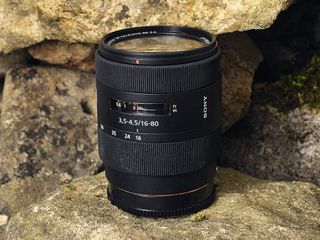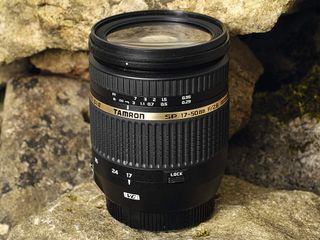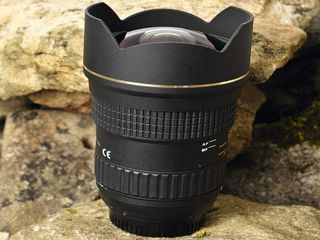Best zoom lens upgrade: 8 tested
Upgrade the standard zoom lens that came with your DSLR

All but two of the zoom lenses we tested are designed for APS-C sensors - the Olympus Zuiko Digital 14-54mm f/2.8-3.5 II is designed for the smaller Four Thirds sensor, and the Tokina AT-X 16-28mm f/2.8 PRO FX for full-frame. Key advantages are that these lenses tend to be smaller, lighter in weight and cheaper to manufacture, which makes them easy to handle and less expensive to buy.
Given the massive dominance of APS-C compared with full-frame sensors in the DSLR market, it's strange that Tokina has discontinued its 'DX' format constant-aperture 16-50mm lens. Instead, the company has just launched an 'FX' full-frame 16-28mm f/2.8 lens, which is equally compatible with full-frame and APS-C Canon and Nikon bodies.

While the Tokina optic is typical of wide-angle, full-frame zoom lenses, there are nevertheless advantages to using this type of lens on an APS-C body. Vignetting (darkened corners of the image frame) should be much less noticeable, especially at large apertures, and sharpness may be better at the extreme edges and corners of the frame. This is because the larger image circle produced by the lens is cropped so that you're only using the central area, where the quality is at its best.
The downside of wide-angle full-frame lenses are usually increased bulk and weight - making them harder to handle - they're more expensive, they lack zoom range and they generally don't have optical stabilisation.

Zoom lens features to look for
Zoom range
Differences in zoom range are exaggerated once you take APS-C crop factors into account. The effective range of a 16-85mm lens compared with an 18-55mm is about 24-128mm as opposed to 27-83mm.
Distance scale
Often lacking on cheap kit lenses, a focus distance scale is incredibly useful for setting hyperfocal distance for maximising depth of field, as well as for setting up manual flash power output.
Autofocus system
Fast, quiet autofocus is massively useful. Top performers include Canon USM (UltraSonic Motor), Nikon AF-S (AutoFocus Silent Wave) and Sigma HSM (HyperSonic Motor) systems.
Front element
Front elements that don't rotate during focusing make life much easier when using rotation-specific filters such as circular polarisers, and enable the use of optimised, petal-shaped lens hoods.
Constant aperture
A large, constant aperture enables fast shutter speeds and tight depths of field when shooting. If you set a large aperture, it will remain fixed throughout the entire zoom range.
Optical stabilisation
One of the most useful innovations in lens design, optical image stabilisation enables consistently sharp handheld shots in the absence of in-camera, sensor-shift stabilisation.
Current page: Zoom lens compatibility and key features
Prev Page Best zoom lens upgrades explained Next Page Canon EF-S 17-85mm f/4-5.6 IS USMGet the best Black Friday deals direct to your inbox, plus news, reviews, and more.
Sign up to be the first to know about unmissable Black Friday deals on top tech, plus get all your favorite TechRadar content.
